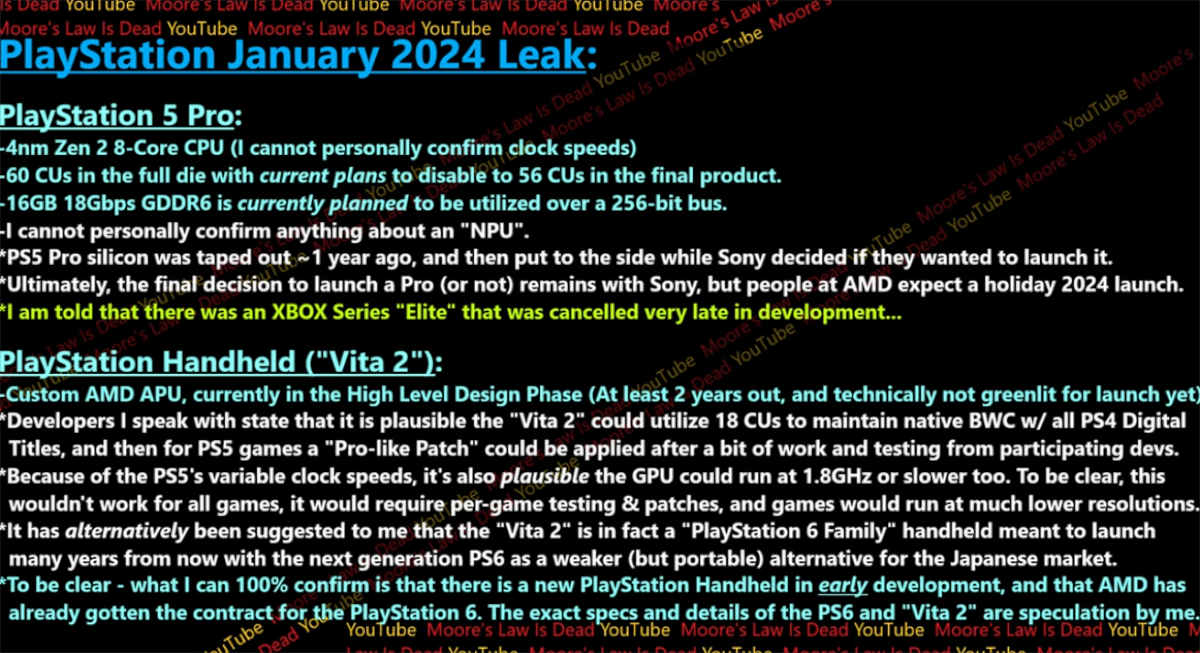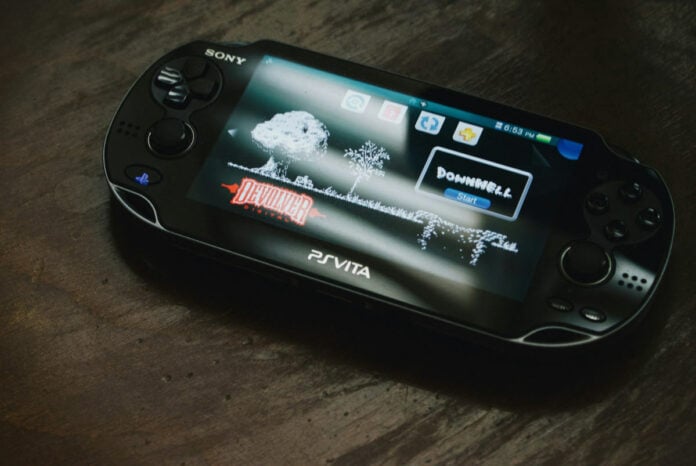Apparently, yet another AMD-powered handheld is in early development and it might be the Sony PS Vita 2. It will allegedly be compatible with both PS4/PS5 titles. Thankfully, it appears to be a fully-fledged handheld, meaning PlayStation Portal it is not.
The device was ousted by popular YouTube tech analyst and leaker, Moore’s Law is Dead. Sony is planning to re-enter the handheld market with a custom-built AMD chipset, akin to the Asus ROG Ally and Lenovo Legion Go. The handheld is currently in the ‘High Level Design’ phase, meaning it’s far from a complete product and will take at least two years before production.
In terms of specs, the source speculates it’ll likely utilise 18 CUs to maintain native compatibility with PS4 titles. At least when taking the current PS4 AMD architecture into consideration. The GPU could also be clocked at 1.8GHz and employ a minimum of 16GB shared memory to ensure compatibility with PS5 titles. However, this will most likely be downgraded versions that developers will have to implement via patches.
Of course, the underlying silicon and specs are merely theorised. The only concrete confirmation is that there is indeed a PS handheld in development. According to Moore’s Law, “Sony is not just asking AMD, it is paying for active development right now.”

Do we need a PlayStation Handheld?
One question still remains. If true, can a PS Vita 2 exist in today’s burgeoning mobile gaming landscape? Possibly. The key is to unify the PlayStation platform. Based on the evidence provided, if Sony plans on making this compatible with PS4, PS5, and the next-gen consoles, then it could work entirely in Sony’s favour. It’s no surprise that the PlayStation Portal sold out at launch and continues to be limited in stock, even though it’s merely a remote-play handheld.
However, there are many arguments against a PS Vita 2 or whatever Sony wishes to call it. For one, the market is quickly becoming diluted and gamers are spoilt for choice. Everyone wants a piece of the mobile PC gaming market. From the ever-popular Steam Deck, Rog Ally, and Legion Go, to the many niche products built by Aya Neo, OneXPlayer, and Aokzoe, there are loads to choose from. Even MSI has an Intel-based handheld aptly named Claw on the way.
These are beastly little machines that offer little compromise, and you can customise them to your needs. Prefer a higher refresh rate? Simply lower the resolution, and vice versa. Need more storage? Pop in a compatible SSD, and there you have it. Simple. However, Sony, like Nintendo, relies on a level of simplicity that is plug-and-play without the headache of performance tinkering. Depending on the person, this could be a positive or a negative. Lastly, let’s not even start with third-party title support. The simple fact is that lesser hardware requires scaling, and not all developers are willing to commit.
Nevertheless, a PlayStation Vita 2 seems like a great idea on paper. Sony has a long road ahead, and it needs to tick all the right boxes to create a successful next-gen handheld.

